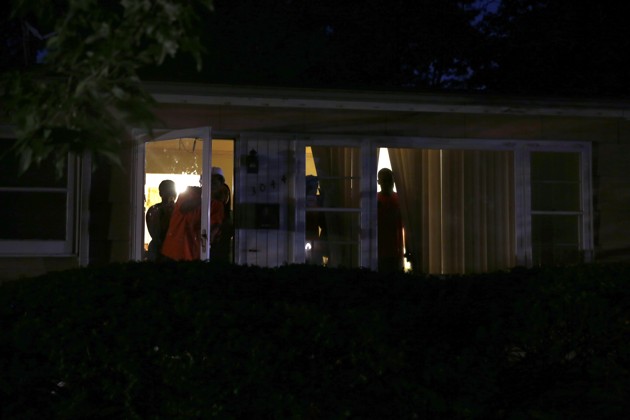Today's cities may be more diverse overall, but people of different races still don’t live near each other.
ALANA SEMUELS, theatlantic.com
Nearly 50 years ago, after a string of race-related riots in cities across America, President Lyndon B. Johnson commissioned a panel of civic leaders to investigate the underlying causes of racial tension in the country.
The result was the Kerner Report, a document that castigated white society for fleeing to suburbs, where they excluded blacks from employment, housing, and educational opportunities. The report’s famous conclusion: “Our nation is moving toward two societies, one black, one white—separate and unequal.”
Much of America would like to believe the nation has changed since then. The election of a black President was said to usher in a “post-racial era.” Cheerios commercials now feature interracial couples. As both suburbs and cities grew more diverse, more than one academic study trumpeted the end of segregation in American neighborhoods.
But now, a new report calls into question that much-vaunted progress. In a study published Thursday in the August issue of American Sociological Review, a trio of academics looks into the data and finds that segregation is actually becoming more pronounced in many American neighborhoods. The practices derided by the Kerner Commission, including white flight, exclusionary zoning, and outright prejudice, are continuing to create black areas and white areas, but this time around, those areas exist in both the cities and the suburbs.
“We’re more negative than other researchers who see declines in segregation,”Daniel Lichter, the lead author and a sociologist at Cornell, told me. “I have a hard time putting a positive spin on this research.”
Previous data has suggested that segregation between black and white populations is declining. But much of that research looked at entire metropolitan areas, and found more minorities in suburbs, which led researchers to conclude that the nation was no longer divided into black cities and white suburbs. Lichter and his colleagues looked at smaller communities, and found that while black residents don’t just live in inner cities anymore, the suburbs they’ve moved to are majority black, while other suburbs are majority white.
“Our substantive point is straightforward,” they write. “Segregation between places (e.g., city-suburb or suburb-suburb) may be increasing, even as overall metro-neighborhood segregation declines.”
In the 1960s, white families moved from cities to suburbs when they saw black neighbors move in next door. Now, they move from suburbs to farther-out fringe areas often not counted in academic studies “hunkering down in all-white neighborhoods, affluent gated communities, or unincorporated housing developments at the exurban fringe,” the researchers write.
And more white Americans, drawn by walkable neighborhoods or transit, are moving back into the inner cities that were once shunned. Young whites and baby boomers, for example, are moving to areas of central cities such as Washington, D.C., which was, for years, a majority-minority city. That, in turn, prices out minority residents.
Segregation isn’t just happening between black and white towns. Hispanic and Asian residents are segregated into their own cities and towns, too. Dover, New Jersey, for instance, a town 30 miles west of New York, was 70 percent Hispanic in the 2010 Census. In 1980, it was only 25 percent Hispanic.
These patterns of segregation are governed by housing practices on individual and municipal levels, like they were 50 years ago. Lenders and real estate agents still steer families to areas with populations of similar races, white families still flee areas with growing minority populations, and family and immigrant networks still attract groups of people similar to themselves.
Over time, communities become known as “black” or “white” or “Asian” or “Latino,” but local policy choices govern some of these categorizations. For example, in Ferguson, Missouri, the percentage of the population that was black increased to 67.4 percent from 25.1 percent between 1990 and 2010. The white population there dropped to 6,206 from 16,454 over the same time period. As whites started to leave, the local government began to allow for the construction of low- and mixed-income housing apartments. Investment firms bought out underwater mortgages and rented the homes to minorities.
“Ferguson became recognized as a ‘black suburb’ that could be distinguished from other nearby suburban communities that made different zoning and administrative decisions,” the authors write.
On the flip side, white communities make decisions that keep minorities out. Exclusionary zoning laws make it difficult to build mixed-income housing or apartment buildings in some towns, despite court cases seeking to make citiesmore diverse. These housing policies mean that cities compete for different types of people, and by banning apartment buildings or affordable housing, cities can better attract affluent white taxpayers.
Black-white segregation accounted for much of the divide between different communities, but whites seem more amenable to Asian or Hispanic families moving into their neighborhoods, researchers found.
Hispanic-white and Asian-white segregation in metropolitan areas has remained virtually unchanged between 1990 and 2010, while black-white segregation has declined in metropolitan areas. But segregation between suburban places has increased for blacks and whites, Hispanics and whites, and Asians and whites during that period.
“People know what is a white suburb and what is a black suburb,” Lichter says. “Whites are still attracted to those suburbs that are white.”
The study takes on added importance in the wake of a Supreme Court decision that upheld parts of the Fair Housing Act that could help bring further legal challenges to discriminatory practices. A few weeks later, the Obama Administration announced an overhaul of how the federal government distributes housing money. The new rules will require metropolitan areas to use data to measure segregation, and then take steps to address it, at least if they want to receive money from the federal government.
Such new policies could be a start to addressing this new version of an old problem. Even if they do, though, it was a divide that the country had hoped to solve half a century ago.

No comments:
Post a Comment